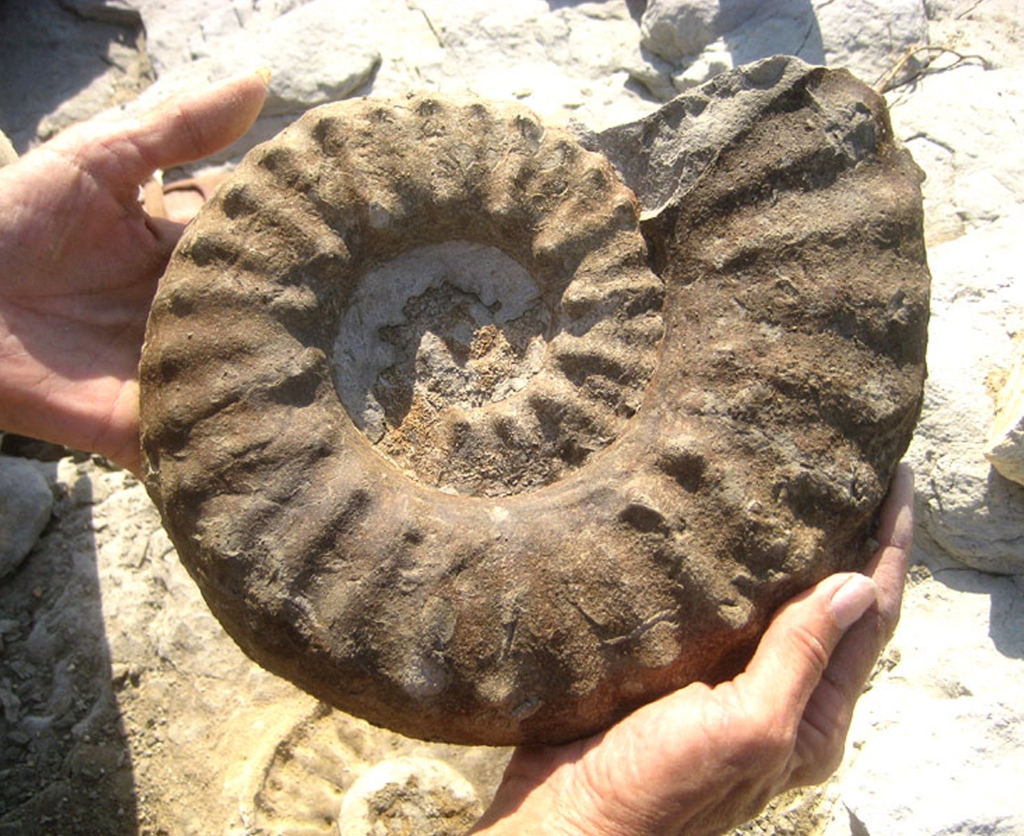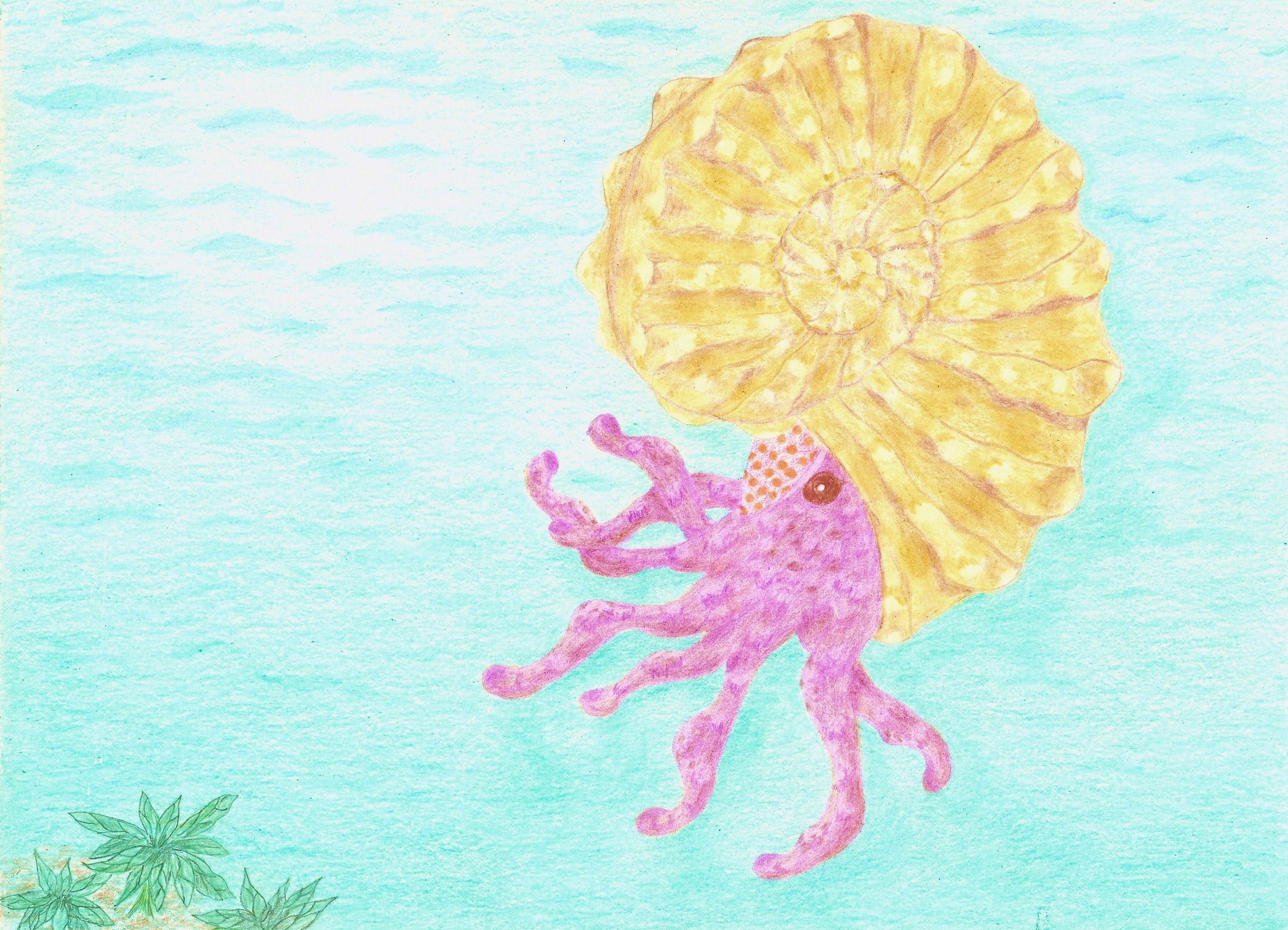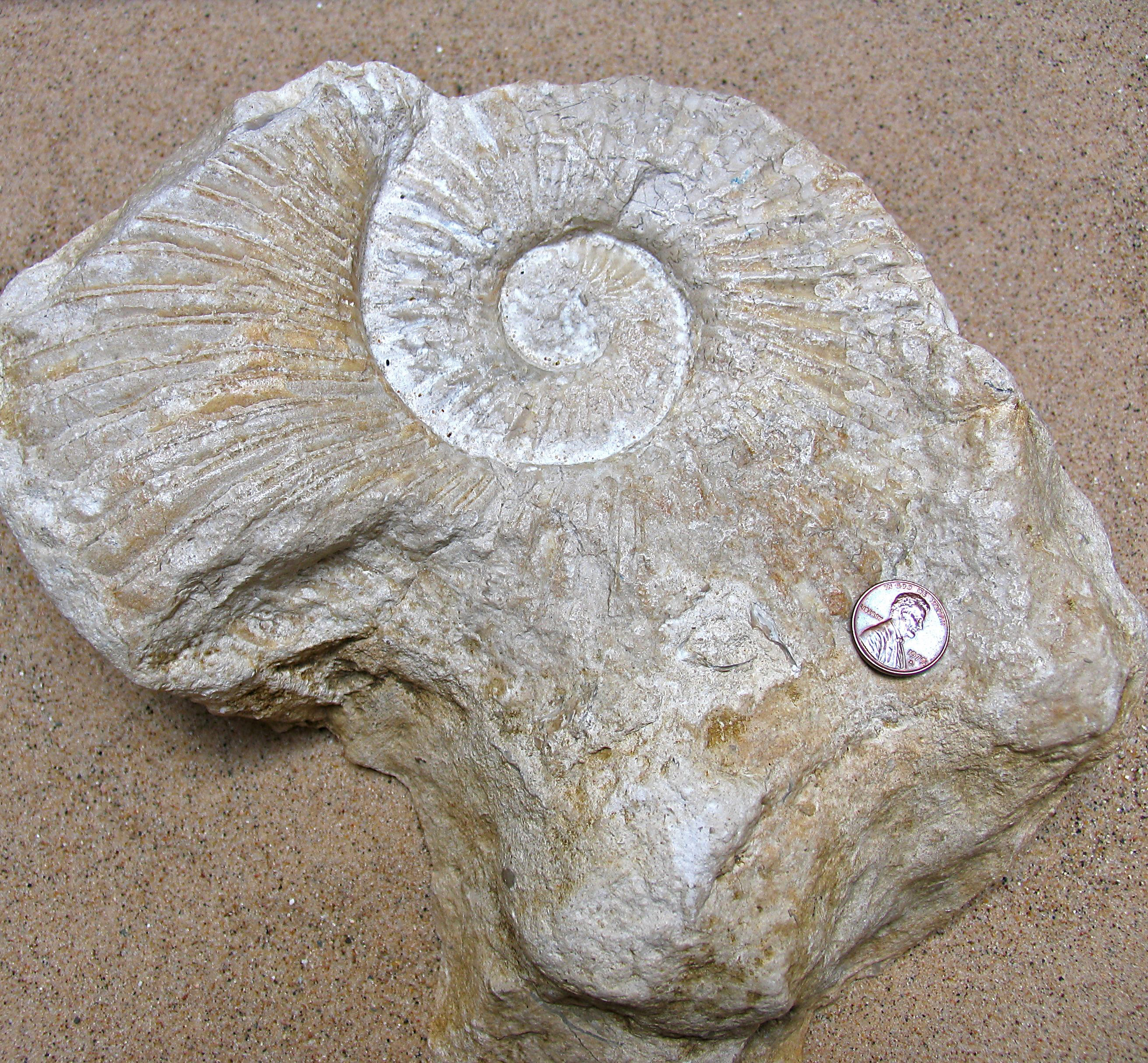
Douvilleiceras mammilatum was a marine cephalopod ammonite, which are ancestors of today’s chambered nautilus. It possessed well-defined growth patterns on its shell (sutures). Douvilleiceras‘ knobs and spines are thought to be an indicator of a hostile environment. It lived during the Cretaceous Period (145 to 66 mya) and was unearthed in Madagascar (Albin Formation).


The above fossil is a broken off section from another ammonite’s shell belonging to the genus, Mortoniceras sp. It was found in Arkansas in a dried up riverbed within the limestone, Goodland Formation. The shell is characterized by deep keels and ribbing. It lived mainly during the Cretaceous Period (145 to 66 mya). As with all the ammonites, its fate was doomed side by side with the dinosaurs.

Multi-purpose Tentacles
The ammonites were ocean predators grabbing their victims with precision and crushing them with their long, powerful tentacles. These tentacles contributed to another important function. They contained special sensors which facilitated their ability to navigate and locate prey in the vastness of the ocean.

Function of Inner Chambers
Ammonites moved in spurts using a kind of jet propulsion by siphoning the ocean water into inner chambers inside their shells and then pushing the water out powerfully through a tube structure called a siphuncle. These inner chambers held water and special gases which helped it descend deep down ocean depths or float upward to shallower depths by filling and releasing the gases and water in and out of the chambers.
Ammonites possessed large heads and are assumed to have been highly intelligent like their cousin octopuses, squids, cuttlefish, nautilus etc. Scientist debate whether ammonites contained ink sacs for defense.

See two gigantic ammonite fossils from another article I have written (scroll to the bottom of article).
CLASSIFICATION
Scientific Name: Mortoniceras
Common Name: Ammonite
Kingdom: Animalia
Phylum: Mollusk (large diverse group of invertebrates possessing a shell, i.e. clams, snails, oysters, etc.)
Order: Ammonitida (characterized by thick, ribbed patterned shells)
Class: Cephalopod (means prominent head and tentacles, i.e. octopuses, cuttlefish, squids, nautilus)
Family: Brancoceratidae
Genus: Mortoniceras (characterized by deep keels, tubercules (knobs) and ribbing)



